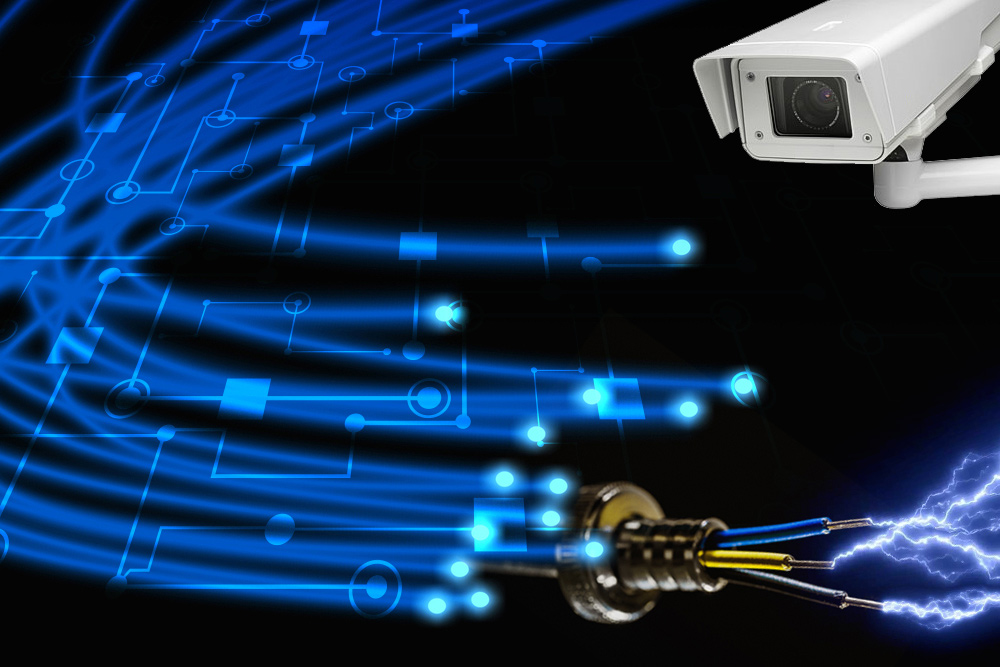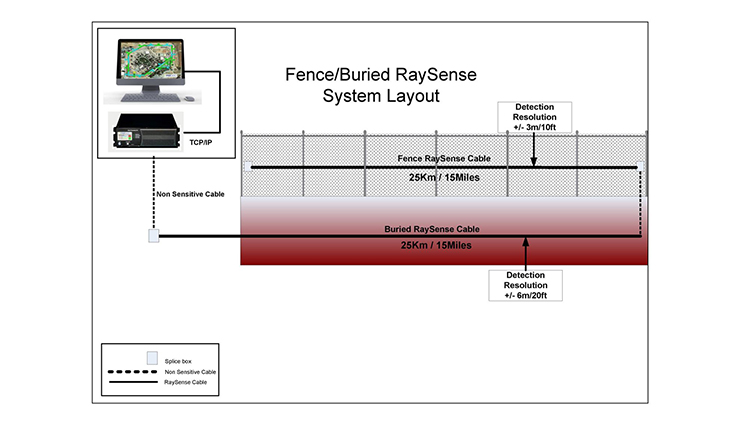The Importance of Fiber Optic Security System Boosts Your Property’s Protection and Surveillance
The Importance of Fiber Optic Security System Boosts Your Property’s Protection and Surveillance
Blog Article
Why Fiber Optic Safety And Security Equipments Are the Future of Security
The transition to fiber optic protection systems marks a significant innovation in the realm of defense, driven by their exceptional data transmission abilities and resilience to external interferences. These systems not only help with faster and a lot more trustworthy interaction however additionally present an affordable solution with reduced maintenance demands. As the landscape of safety develops together with arising technologies such as AI and IoT, the possibility for fiber optics to improve and redefine protection facilities ends up being increasingly noticeable. Nonetheless, the effects of these advancements increase important concerns regarding the future of safety measures and their effectiveness in an ever-changing atmosphere.
Benefits of Fiber Optic Systems
One of the main benefits of fiber optic systems is their remarkable bandwidth capacity, which facilitates the transmission of huge quantities of information over fars away without substantial loss. This particular is especially advantageous for security applications that require the continuous surveillance and transfer of high-definition video clip feeds, sensor information, and other critical details. Optical fiber can accommodate the expanding demands of contemporary protection systems, making certain that information remains intact and trustworthy.
Additionally, fiber optic cords are much less at risk to electro-magnetic disturbance, which can be a substantial concern in atmospheres with different digital gadgets. This resistance improves the honesty of the data being transmitted, thus minimizing the threat of data violations or system failures. Furthermore, fiber optic systems are inherently a lot more protected than conventional copper wires, as touching into a fiber optic line without discovery is exceptionally difficult.
The durability of fiber optic cables also adds to their allure. They are resistant to ecological variables such as moisture and temperature variations, minimizing upkeep expenses and enhancing system durability. On the whole, these advantages placement fiber optic systems as a durable and effective choice for modern-day safety and security infrastructures, guaranteeing trustworthy and safe information transmission.
Boosted Data Transmission Rate

The capacity to transfer large amounts of information promptly facilitates the smooth combination of high-definition video clip feeds and progressed analytics. Security systems can now process and analyze info in real-time, enhancing action times and situational understanding. Furthermore, fiber optic links sustain longer transmission ranges without deterioration of signal quality, making them optimal for extensive security networks.
The raised speed of fiber optic systems not only boosts the performance of safety operations yet also reduces latency. This is particularly crucial in critical circumstances where timely decision-making can prevent safety violations or minimize prospective hazards. As organizations remain to prioritize security and efficiency, the need for quick and try this site dependable data transmission will undoubtedly solidify fiber optic systems as a cornerstone of contemporary protection framework.
Resistance to Disturbance
Fiber optic security systems consistently show phenomenal resistance to electromagnetic interference, a vital advantage in settings prone to digital noise. Unlike conventional copper wires, which can be adversely influenced by electromagnetic areas, superhigh frequency disturbance, and other kinds of electric disruption, fiber optic cables use light to transfer information. This integral building ensures that the signals continue to be clear and unchanged, despite bordering electronic task.
The usage of glass or plastic fibers in fiber optic technology creates an obstacle against disturbance, enabling trusted data transmission even in tough situations such as commercial centers, city areas with high digital website traffic, or places near radio towers. This characteristic substantially reduces the likelihood of signal destruction or loss, making fiber optic systems particularly suitable for safety applications where stability and precision of data are paramount.
Moreover, this resistance to disturbance boosts the general efficiency and integrity of safety systems, making sure that surveillance and sharp systems operate seamlessly. In a world where safety is increasingly endangered by innovative modern technologies, the resilience of fiber optic systems stands apart as a crucial function, enhancing their status as a vital part of contemporary protection infrastructure.
Cost-Effectiveness Gradually
Considerable expense savings can be accomplished over time with the implementation of fiber optic find this security systems. While the initial financial investment may appear greater compared to conventional copper-based systems, the long-lasting monetary advantages come to be obvious through decreased operational and upkeep expenses (fiber security). Fiber optic wires are naturally much more durable and less prone to environmental aspects, which translates to lower substitute and fixing expenses over their lifespan
Moreover, fiber optic systems require much less power to operate, which further reduces power costs. Boosted information transmission abilities enable for less repeaters and amplifiers, minimizing devices financial investment and simplifying installation processes. The scalability of these systems additionally adds to cost-effectiveness, as companies can expand their security infrastructure without incurring substantial additional costs.
One more aspect to think about is the increased performance in tracking and feedback abilities that optical fiber provide. Improved real-time information transmission can cause quicker incident response times, potentially mitigating losses and liabilities associated with protection breaches. In amount, the lasting benefits of fiber optic security systems not only justify the initial expense but likewise place get more them as a monetarily prudent choice for organizations seeking robust security options.

Future Advancements in Safety
Advancing technologies are set to change protection systems, integrating expert system (AI) and artificial intelligence to boost threat detection and action capacities. These innovations will allow protection systems to assess vast amounts of information in real-time, determining patterns and abnormalities that suggest possible dangers. This positive strategy will allow faster decision-making and extra effective event responses.
Additionally, the unification of the Net of Things (IoT) is leading the way for interconnected protection devices, providing extensive security and monitoring. Smart sensing units can relay info regarding environmental adjustments, while automated informs can inform protection personnel quickly of questionable activities.
Furthermore, the development of biometric technologies will further boost safety and security systems. Facial recognition, finger print scanning, and retina identification are ending up being extra sophisticated, offering layers of authentication that are hard to bypass.
Final Thought
In verdict, fiber optic safety and security systems represent a significant advancement in protection modern technology, using unmatched information transmission rate, resistance to electromagnetic disturbance, and long-term cost-effectiveness. As the need for innovative safety options remains to expand, the combination of fiber optics with emerging innovations such as AI, IoT, and biometrics will better enhance protection facilities (fiber security). The mix of these technologies will certainly make sure a much more secure and responsive atmosphere, solidifying optical fiber as a cornerstone of future security systems
Report this page